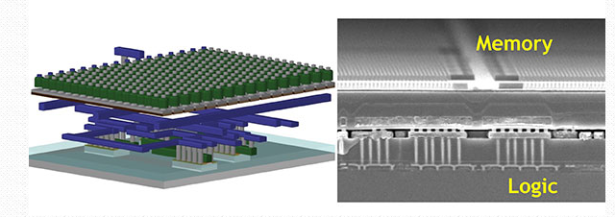To celebrate 60 years of EDN, we’re looking into the future to predict what advancements will be made in IC Design in the next 60 years. By 2076 3-D room-temperature, superconducting, quantum, neuromorphic, and photonic mixed-signal devices will be the common denominator for all integrated circuit designs. Design tools will be so sophisticated that even novice designers will be able to mix and match these technologies into system-in-package designs that solve all application problems behind the scenes. Users will be so used to extensions to their innate brain capabilities that the technologies which perform the tasks will be taken for granted, leaving the engineering community—and its robotic assistants—on a unique echelon of society that actually understands how the world works.
3D stacked memories
BeSang’s 3D stacked memories integrate memory cells in the vertical direction atop standard complementary metal oxide semiconductor (CMOS) logic, therefore boosting memory density in the smallest possible footprint. Unlike 3D NAND, BeSang's 3D stacked-memory designs can be applied to almost any type for memory including DRAM, NAND- and NOR-flash. BeSang believes its architecture will expand silicon memories’ lifespan for at least 20 years after the end of Moore’s Law and maybe even to 2076.
In comparison with conventional designs, BeSang's 3D Super-NOR (pictured) is a thousand times faster than today's NAND on a NVDIMM. Also, it is significantly cheaper than DRAM and shows 1,000× better endurance compared to ordinary 3D NAND, according to BeSang. The technology has been successfully developed, licensed to Hynix, but is ready for product development by other IC houses too. On top of conventional memory logic, high density semiconductor memory cells using vertical pillar transistors are implemented with an extremely simple fab investment. BeSang claims products based on its reference designs could be introduced to the commercial market within two years and can be expected to serve the memory market for 20+ years, replacing HDD, SSD, and embedded cache memories for high performance CPUs, GPUs, and APs.
For More Details: The future of IC design


